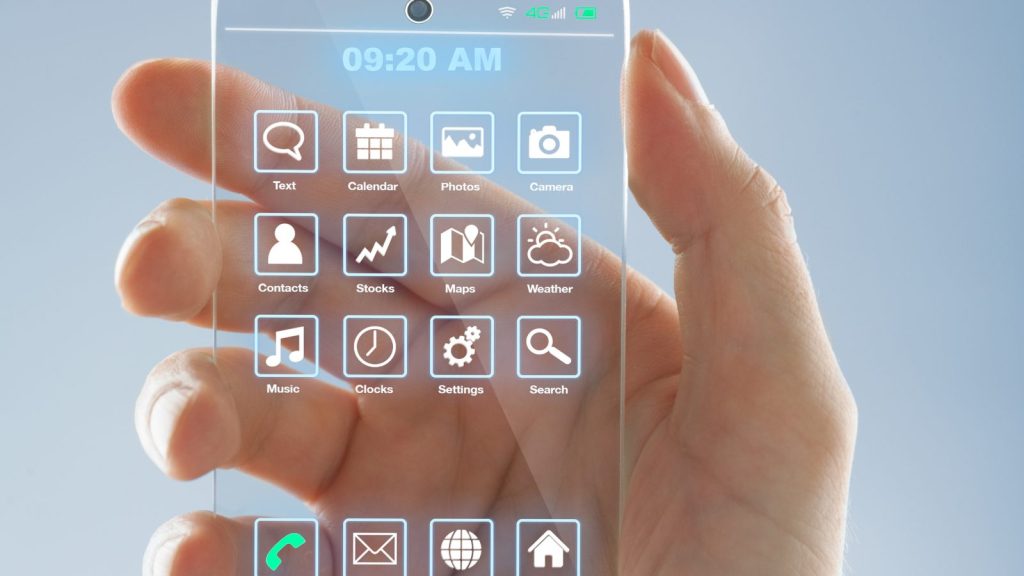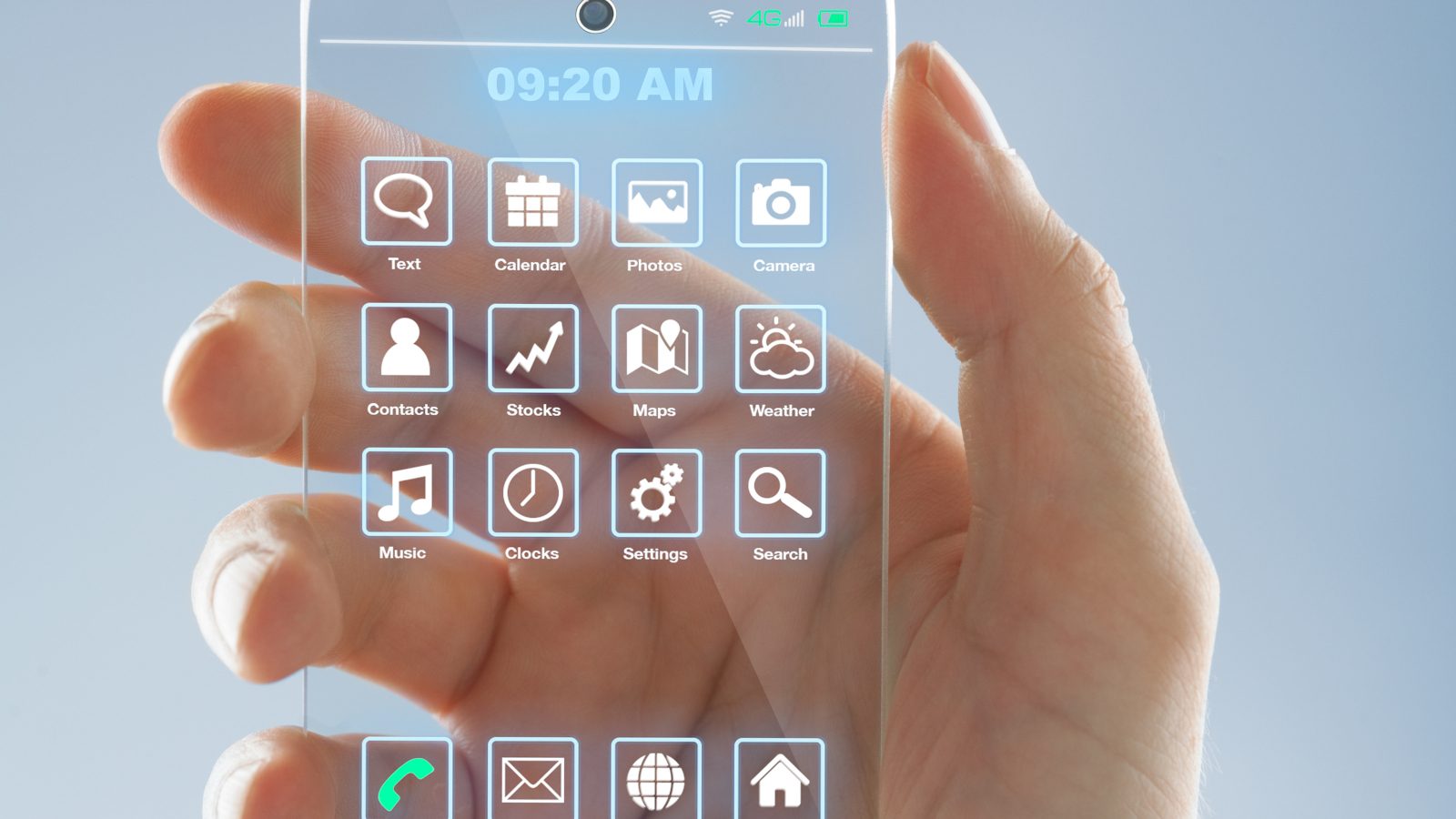As smartphones have become essential to daily life, advancements in mobile technology continue to reshape what we expect from these devices. From foldable screens and AI integration to extended battery life and environmental sustainability, the future of smartphones promises exciting changes. Here’s a look at the most anticipated trends and innovations set to shape the next generation of smartphones.

1. Foldable and Rollable Screens
The future of smartphone design is evolving, with foldable and rollable screens at the forefront. Flexible OLED and AMOLED technology are making it possible for companies to experiment with screens that fold, bend, or roll, allowing for larger displays in compact devices.
- Foldable Phones: Leading brands like Samsung, Motorola, and Huawei have already introduced foldable smartphones, and advancements are expected to make these devices more durable and affordable.
- Rollable Screens: Rollable phones, which can expand horizontally or vertically, are an emerging trend. Companies like LG and Oppo have showcased prototypes, and rollable devices may soon enter the mainstream.
Impact: These devices combine the functionality of smartphones and tablets, appealing to consumers who want both in one device and pushing the boundaries of mobile technology design.
2. Artificial Intelligence (AI) Integration
AI is expected to play an even more significant role in the future of smartphones, making devices smarter, more personalized, and efficient. AI-powered processors will enhance phone performance and support increasingly complex tasks, from camera improvements to personalized recommendations.
- AI in Photography: Future smartphones will use advanced AI algorithms for real-time image enhancements, allowing users to take professional-quality photos regardless of lighting conditions or movement.
- Predictive Text and Suggestions: AI will offer context-based suggestions across apps, understanding user behavior and anticipating needs, such as predictive text responses and app usage.
Impact: AI integration will streamline user experience, enhance productivity, and allow devices to better understand and adapt to individual users’ needs.
3. Extended Battery Life and Fast Charging Technology
Battery life remains a priority for smartphone users, and manufacturers are focusing on developing longer-lasting batteries and ultra-fast charging technology. Improvements in battery materials, such as graphene, are expected to bring more energy-dense batteries to market, enabling smartphones to last longer on a single charge.
- Fast Charging: Fast-charging technology is becoming more advanced, with some companies promising 100% charge in under 20 minutes. Wireless fast charging is also improving, reducing the need for cables.
- Battery Innovation: Solid-state and graphene batteries could soon replace lithium-ion batteries, offering greater safety and capacity.
Impact: Extended battery life and faster charging will enhance convenience and reliability, reducing the need for constant recharging and making smartphones more efficient for heavy usage.
4. 5G and Beyond: 6G Development
With 5G networks continuing to expand worldwide, the future promises even faster connectivity through 6G technology, which could arrive by the end of the decade. While 5G has brought faster speeds and lower latency, 6G is expected to provide even more advanced capabilities for data transmission and connectivity.
- Enhanced Mobile Experiences: 5G and future 6G networks will support ultra-high-definition streaming, AR/VR applications, and real-time cloud gaming, bringing immersive mobile experiences to life.
- Internet of Things (IoT) Integration: 5G and 6G will enable a more connected IoT ecosystem, where smartphones act as hubs for connected devices, from smart homes to wearables.
Impact: 5G and 6G will open up new possibilities in gaming, remote work, telemedicine, and augmented reality, transforming smartphones into all-encompassing connectivity devices.
5. Augmented Reality (AR) and Virtual Reality (VR) Integration
Augmented and virtual reality are set to be major features in future smartphones, offering new possibilities for entertainment, work, and communication. Enhanced AR capabilities are likely to be embedded in apps, games, and even everyday phone functions, such as navigation and shopping.
- AR in Everyday Use: Future smartphones will use AR to create interactive maps, virtual try-on experiences for shopping, and immersive gaming.
- VR-Ready Devices: Advanced processors and displays will support VR experiences, allowing users to engage in virtual worlds with ease.
Impact: AR and VR integration will create more engaging and interactive experiences, enabling smartphones to become powerful tools for education, remote work, and entertainment.
6. Advanced Biometric Security
Security remains a top priority, and biometric technology is expected to advance significantly. In addition to facial recognition and fingerprint scanning, future smartphones may use more secure, contactless authentication methods.
- In-Display Fingerprint and Face Scanning: Advances in biometric security are making it possible to embed scanners directly within displays.
- Iris and Voice Recognition: Enhanced iris scanning and voice recognition are expected to add further layers of security, offering multiple methods for secure and seamless unlocking.
Impact: Advanced biometric security will make smartphones more secure, reducing risks of data breaches and unauthorized access.
7. Eco-Friendly and Sustainable Materials
As consumer awareness of environmental issues grows, smartphone manufacturers are under pressure to create more sustainable products. The future of mobile technology includes eco-friendly materials, recyclable components, and lower-impact manufacturing processes.
- Recyclable Components: Future phones may be made from fully recyclable materials, like recycled aluminum or bioplastics.
- Sustainable Manufacturing: Companies are investing in greener supply chains and carbon-neutral production practices to reduce environmental impact.
Impact: Sustainability will become a key factor in smartphone design, appealing to eco-conscious consumers and setting a new standard for responsible manufacturing.
8. Enhanced Health Monitoring and Wearable Integration
Smartphones are increasingly serving as health and wellness devices, and future models will likely integrate even more health-focused features. Advanced sensors and wearable integrations will allow smartphones to monitor health metrics in real-time.
- Health Tracking Sensors: Built-in sensors may monitor heart rate, blood oxygen levels, and other vital signs.
- Seamless Wearable Connections: Future smartphones will seamlessly connect with wearables like smartwatches and fitness bands to provide comprehensive health insights.
Impact: Smartphones will become essential tools for personal health, enabling users to monitor and manage wellness goals through accessible and integrated technology.
9. Seamless Device Ecosystem and IoT Integration
Smartphones are increasingly becoming central to the IoT ecosystem. The future will see even more seamless integration between phones and other connected devices, from smart home systems to vehicles and appliances.
- Interconnectivity with Smart Homes: Smartphones will act as remote controls for various smart home devices, managing everything from lighting to home security.
- Vehicle Integration: Deeper integration with vehicles will allow users to control and monitor their cars directly from their smartphones.
Impact: Smartphones will serve as a central hub for managing connected devices, creating an efficient and unified smart ecosystem.
10. Modular and Customizable Features
Modular technology, which allows users to customize or replace specific phone components, is expected to grow in popularity. This will allow consumers to update or repair individual parts (like cameras, batteries, and displays) instead of replacing the entire device, making phones more customizable and sustainable.
- Replaceable Modules: Future phones could offer replaceable cameras, batteries, or storage modules, extending the device’s lifespan.
- Personalized Components: Users may choose components based on preferences, such as enhanced cameras for photography or high-performance processors for gaming.
Impact: Modular and customizable smartphones will empower users to personalize their devices, reduce electronic waste, and prolong device lifecycles.
Conclusion
The future of mobile technology promises smartphones that are more powerful, flexible, and integrated into our lives than ever before. As technology advances, smartphones will offer new levels of convenience, connectivity, and customization, transforming them into not just communication tools but comprehensive lifestyle devices. With ongoing advancements in AI, AR/VR, connectivity, and sustainability, the next generation of smartphones will redefine how we interact with the digital world.








